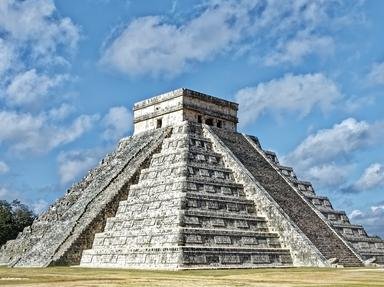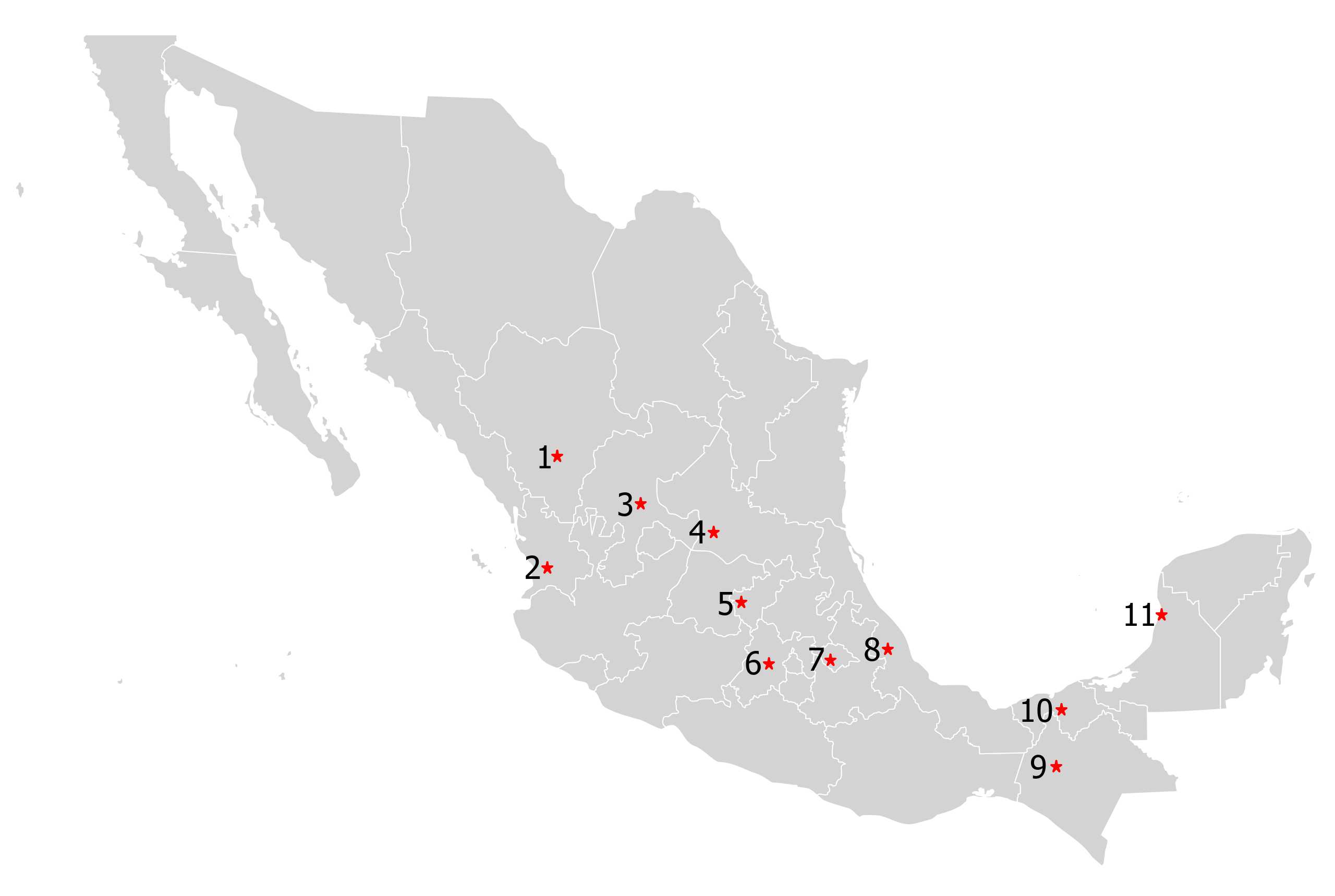
México Alfabético (Tercera Parte) Quiz
The final instalment in my trio of quizzes labeling Mexican State Capitals, featuring the last eleven ordered alphabetically (by city name, not state). Can you match the correct capital city name (San Francisco de Campeche to Zacatecas) to its state?
A label quiz
by reedy.
Estimated time: 3 mins.
- Home
- »
- Quizzes
- »
- Geography Trivia
- »
- North America
- »
- Mexico
